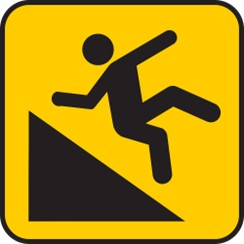 Happy New Year to all! I’m guessing that many of you have made some New Year’s resolutions.
Happy New Year to all! I’m guessing that many of you have made some New Year’s resolutions.
As for me, I have resolved for the new year to focus, to the greatest extent possible, on things I can actually control. I also plan to devote as little attention as I can to things that are beyond my control. This is hardly a new idea – the principle goes back at least as far as ancient Greece. As the stoic philosopher Epictetus once wrote, “Some things are up to us, and some things are not.” He also pointed out that trying to control the uncontrollable is inconsistent with living in harmony alongside nature.
While focusing on what you can control sounds great, it’s more easily said than done. But I’m going to give it my best shot. This resolution has gotten me thinking about what is truly within my control, and I’ve come to realize that this is more complicated than I had originally thought.
For one thing, in my field of qualitative research, it’s well accepted that it is unwise to exert too much control over research conversations and interviews. Only by ceding control can we allow conversations to go in unexpected directions and yield creativity and insight that would otherwise be inaccessible. So, even if you can control something, maybe you shouldn’t.
There are also implications for marketing strategy. For instance, you can’t control how consumers behave and perceive your brand. However, you usually can control the brand experience, which can provide some indirect control over behaviors and perceptions. This illustrates the principle elucidated by the Roman philosopher Seneca that, while we can control our own actions and decisions, we generally can’t control outcomes.
So, what makes the question of what you can control so complex? Here are some factors that I think contribute to this:
-
Control is not a binary thing; it’s one end of a continuum (the other end being chaos). While some elements of a situation are clearly controllable, and others clearly aren’t, many fall into a gray area. You might not be able to ‘control’ something, but you can influence it. This is particularly true in collaborative situations, when success depends on both individual and collective effort.
-
Overly stressing control can hinder creativity. Making a situation too controlled makes it less likely that the unexpected will happen. Remember – the world is a beautifully messy place; my last newsletter touches on the idea of embracing the uncontrollable.
-
Emotions can get in the way – ceding control might not feel good.
-
So can moral values – giving up control might even feel wrong.
Let’s return to my New Year’s resolution. While there are countless ‘controllable’ things to choose from, I’ve decided to focus on just three in 2025:
-
How much time I devote to the people I care about.
-
My willingness to change my opinion about something.
-
How much effort I make to discover new ideas and build new skills.




